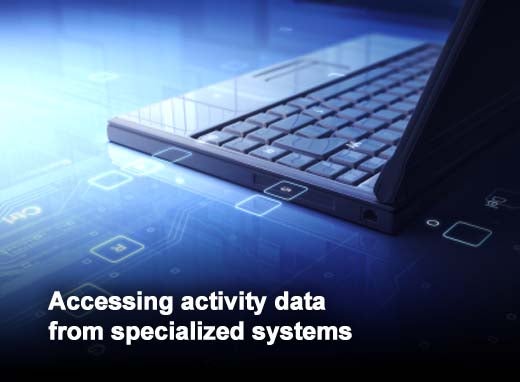In today’s economy, small- and medium-sized businesses (SMBs) are constantly looking for ways to save money, yield maximum potential from deployed technologies and, ultimately, “do more with less.” One way they can accomplish these goals is by taking advantage of a log management solution.
At their core, log management solutions enable companies to monitor and analyze all kinds of activity happening on their networks. But what does this activity mean? And how can it be used to secure corporate networks, protect sensitive information, increase compliance and deliver business value? GFI Software, a leading provider of IT and security solutions targeted at SMBs, has compiled a list of five unique ways SMBs can use their log management solution — and the activity intelligence it provides — to get the most out of their technology investments.
Click through for five unique ways businesses can use their log management solution to get the most out of their technology investments, as identified by GFI Software.
Event logs equip IT and business managers with valuable activity data, such as who is accessing what information and what they are doing with it. Are unauthorized employees accessing information they shouldn’t be? Are authorized employees abusing their access privileges by accessing systems during off-shift hours or sending data to individuals outside of their department? Using a log management solution, SMBs can identify activity that is not in compliance with corporate access policies and use that intelligence to remediate problem areas — enabling the business to protect sensitive information from insider threats.
With the increasing sophistication of malicious threats and attack methods, advanced malware is beginning to bypass antivirus software and other security solutions. Implementing a log management solution and carefully maintaining activity logs can help companies detect hacker intrusions and infiltration of malware and take the necessary steps to correct the problem. Remember, the best way to mitigate risk is to implement a layered approach to security.
Organizations have come to terms with the fact that suffering from a data breach is a very real risk — regardless of whether it’s at the hands of hackers or internal employees, whether maliciously or accidentally. Companies are realizing that they need to have a strategy in place for dealing with a data breach should the unthinkable happen. What are the first steps to take? And what is the strategy for remediating the problem as quickly as possible? SMBs can leverage log management solutions to identify anomalous activity and immediately take action to plug security holes and remediate the breach — limiting their exposure to prolonged or repeated attacks via the same compromised weak point.
Companies can monitor event logs not only to identify suspicious user activity, but to detect systems, devices and applications that aren’t behaving as expected. Log management solutions that offer real-time network status alerts enable administrators to promptly intervene and immediately remediate faulty configurations or other business process issues. Taking quick action can enhance business continuity and productivity, reduce costs associated with downtime,and minimize the negative impacts and reputation damage that can result from system outages.
Some specialized systems and servers, such as Microsoft SharePoint, include their own logging systems that produce cryptic activity data — making them essentially unusable to IT administrators. However, innovative log management solutions can capture, process and “translate” native logs from specialized systems and turn them into meaningfully events — enabling administrators to analyze activity information that they would otherwise not be able to access and providing them with a comprehensive view into what is happening across their networks.








